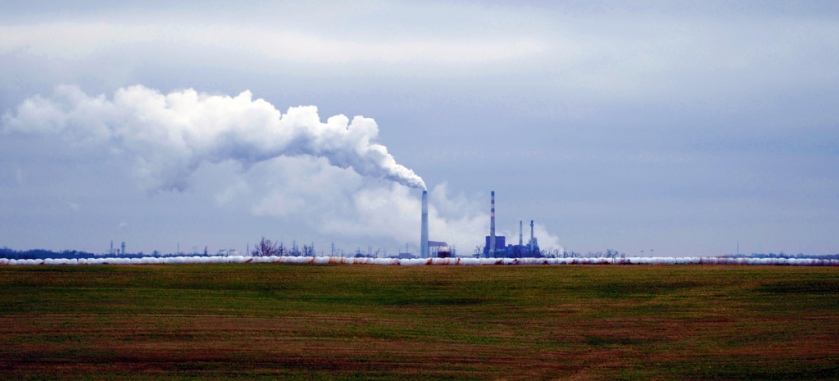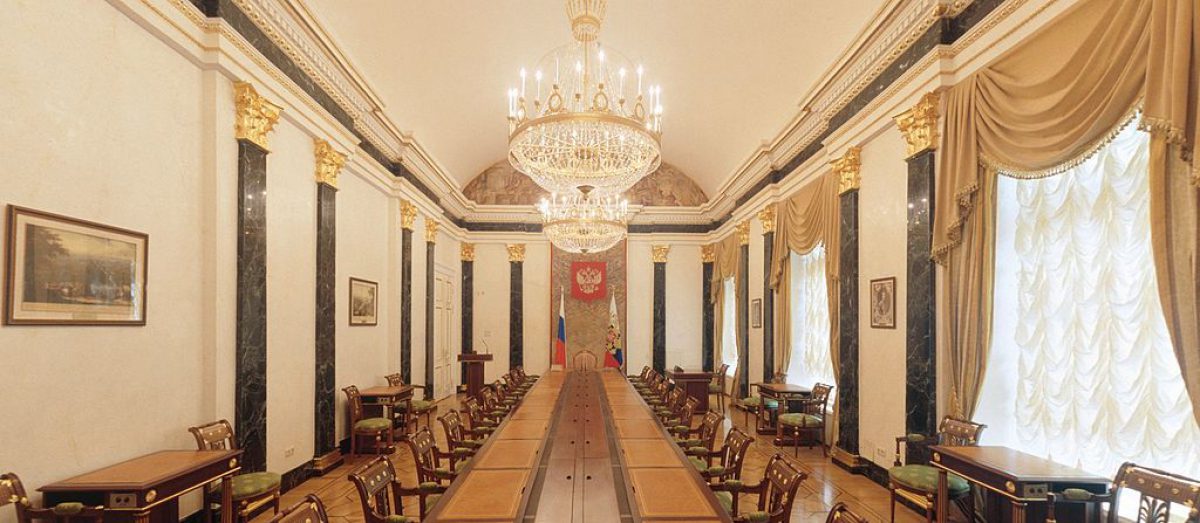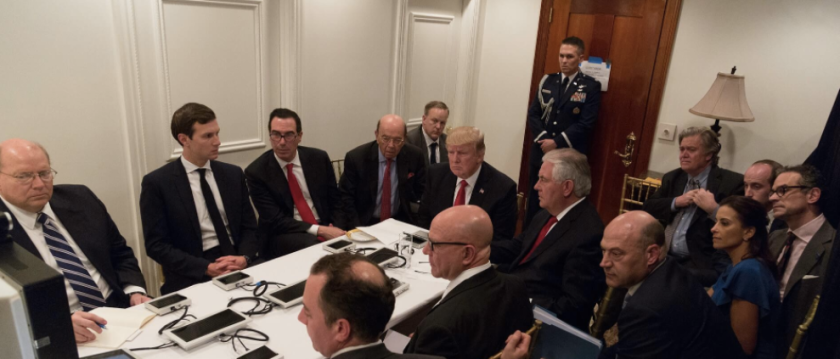
Last week, President Trump reaffirmed that his administration would move to withdraw the United States of America from the 2015 Paris Agreement on climate change pending the renegotiation of a “better deal” more amenable to American business interests. Though Trump’s announcement was generally met with dismay around the world, Russian President Vladimir Putin’s reaction was, characteristically, hard to parse.
Speaking at the St. Petersburg International Economic Forum (PMEF) last Friday, Putin, citing unseasonable weather in Moscow, quipped that: “We [in Russia] should be grateful to President Trump. They say it has been snowing in Moscow, and it is raining here [in St. Petersburg], things are all-around very cold. Now we can blame all of this on him [Trump] and American imperialism. But we won’t do that.”
Though likely intended as a cutting joke at Washington’s expense, Putin’s cheeky invocation of ‘imperialism’ in relation to the U.S. withdrawal from the Paris Agreement nevertheless appears to have gained traction among some of the more serious-minded members of Russia’s media intelligentsia. A prime example is that of Vzglyad columnist Pavel Volkov, who last week penned an article regarding said withdrawal under the questioning headline, “Does a World of Coal and Steel Await Us?”
Published the same day as Putin’s jocular address to PMEF, Volkov’s article frames the Trump White House’s rejection of the Paris Agreement as a disavowal of the process of globalization embraced and promoted by previous administrations. On the face of it, this apparent retreat from ‘globalist politics’ on the part of the United States dovetails neatly with Putin’s putative ambition of restoring Russia to the status of a ‘great power’.
This ambition naturally hinges on Russia’s ability to pursue its national interests free of outside interference; as such, each failure of truly global, multilateral diplomacy (such as that which led to the Paris Agreement in the first place) ostensibly marks an opportunity whereby Russia may resume pursuing its own national interests free of external constraints imposed by groups of other, ‘lesser’ powers.
But back to Volkov.
Volkov imputes a strategic dimension behind Trump’s efforts to pull the United States out of the Paris Agreement. By returning to the model of unhindered industrial growth which fuelled American prosperity after World War 2, Volkov argues, Trump believes the United States can regain an edge over its principal economic and geopolitical rival – namely, China.
Whether Trump actually believes that easing restrictions on fossil fuels and other industrial pollutants will provide an advantage to the United States is, of course, a matter of debate. Whatever the case may be, Volkov construes Trump’s rejection of the global consensus on climate change in explicitly geopolitical terms.
Volkov opens his article by citing early 20th-century Marxist Karl Kautsky’s theory of ‘ultra-imperialism‘, which holds that competition amongst capitalist empires proceeds inevitably to the emergence of a single victor enjoying global hegemony. He suggests that this theory was vindicated briefly by the emergence of the United States as the world’s sole superpower following the collapse of the Soviet Union.
Volkov contends that the emergence of China and the European Union as global powers at the turn of the 21st-century brought an abrupt end to America’s hegemony, and ushered in a new era of imperial competition. Faced with declining living standards and the prospect of civil unrest as a result of its inability to cope with these new geopolitical circumstances, he writes, the United States has found itself left with “nothing to turn to other to than the classics – in other words, to return to industrialization.”
At the same time, Volkov questions whether such a return is even possible, let alone desirable, in light of advances in smart technologies and the advent of service-oriented economies. Meanwhile, various regional powers are “already demanding to recut the pie”, with China, in particular, increasingly laying claim to America’s superpower legacy.
In this sense, Volkov appears to insinuate that the process of competition for ultra-imperialistic hegemony has begun anew. Nevertheless, the apparent fact of this process alone does not necessarily re-validate Krautsky’s theory of capitalist ‘ultra-imperialism’.
To demonstrate his point, Volkov cites Vladimir Lenin’s introduction to fellow Bolshevik Nikolai Bukharin’s 1914 work Imperialism and World Economy. Lenin maintained that although the European empires of his day were certainly developing “in the direction” of ultra-imperialism, such development took place with great conflict and upheaval, leading it to collapse under the weight of its own political, national, and economic contradictions.
With respect to this latter point, Volkov notes that the project of globalization has not been without its own share of “conflict and upheaval”. Yet far from perceiving an opportunity for socioeconomic revolution, he appears to see in this chaos an opening through which Russia might assert its own national interests. Just as China appears to be angling to supplant America’s position at the forefront of global leadership, so Russia seems to be eagerly carving out a niche for itself on the world stage. “Whether [Russia] will succeed in this effort is not clear,” Volkov writes, “though the process itself is obvious.”
There can be little doubt that the Trump White House’s renunciation of the Paris Agreement has struck a significant blow to America’s reputation as a reliable diplomatic partner. Insofar as he couches his assessment of this development in terms of the broader “collapse of the globalist project”, Volkov sees the one as complementing the other.
In this sense, America’s exit from the Paris Agreement certainly does not detract from the Kremlin’s long-term strategic interests. Indeed, with Washington out of the picture, Moscow is also under less pressure to fulfill its own obligations under the Paris Agreement, freeing it to focus on the extraction and export of fossil fuels – a mainstay of Russia’s economy, not to mention an essential component of its geopolitical strategy. As such while the fate of the Paris Agreement remains to be seen, for the time being, the geopolitical climate appears to be changing in Moscow’s favor.
— Allen Maggard

